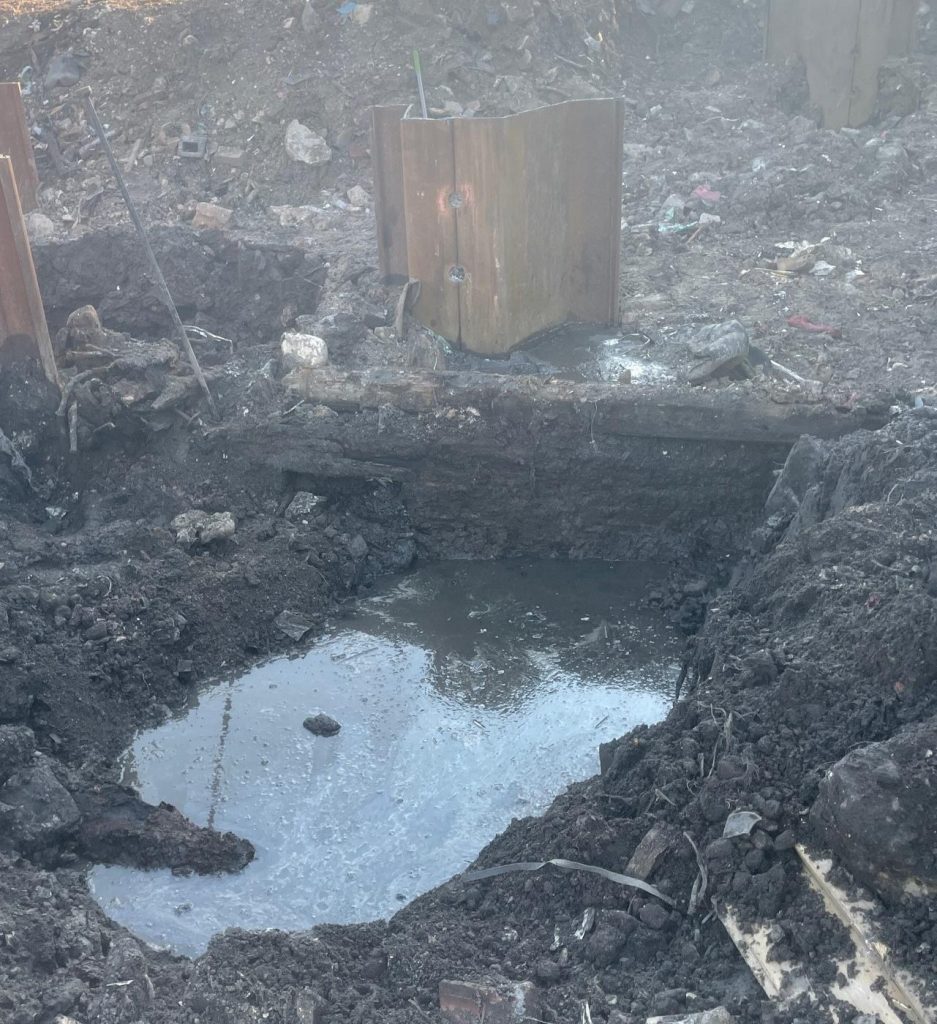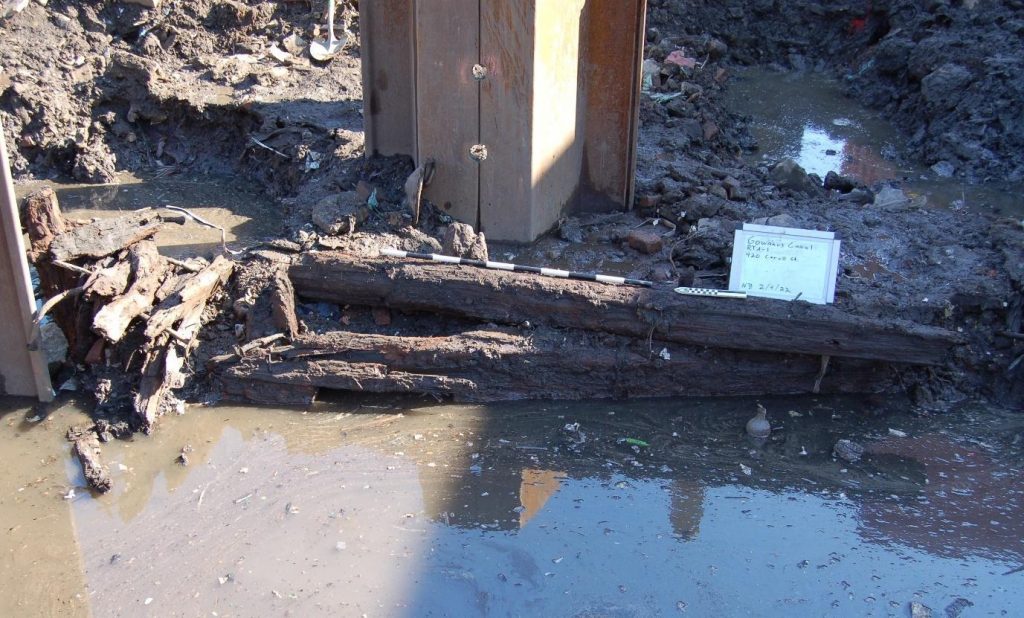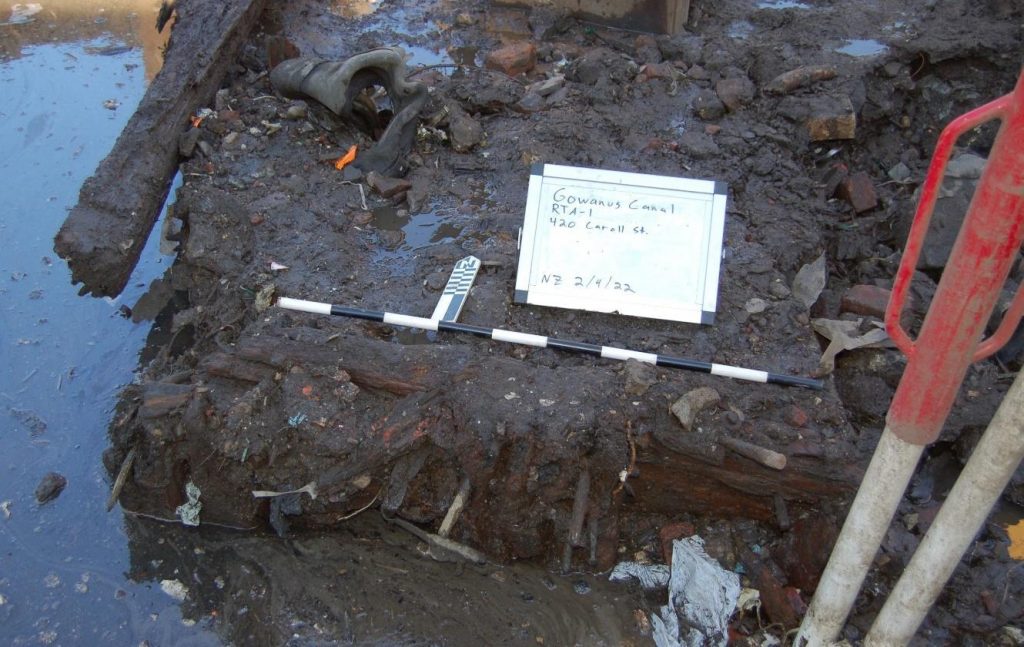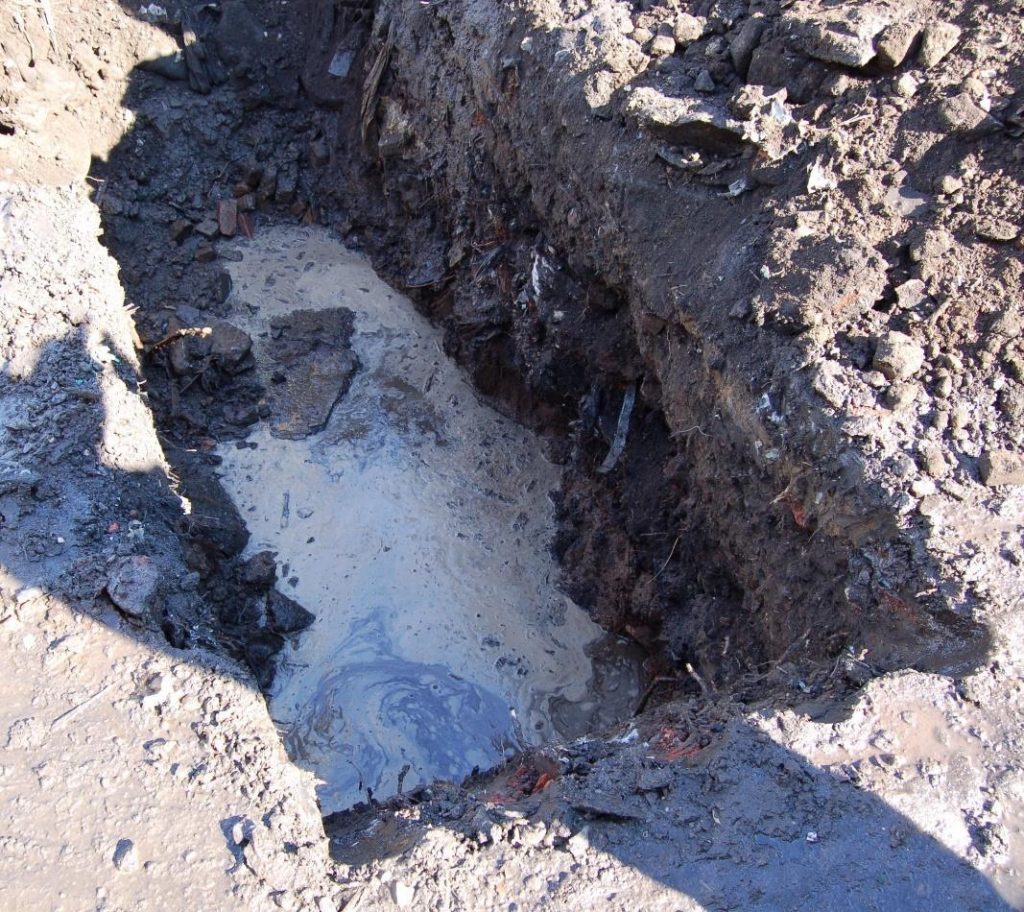This memorandum presents the findings and recommendations of the archaeological documentation conducted at Turning Basin 1 (TB1) of the Gowanus Canal. Archaeological monitoring and documentation was conducted during the installation of a temporary tie-back anchor system to support the TB1 pipe pile separation wall during Phase 3 dredging operations. The temporary tie-back anchor system includes the installation of anchor sheets and tie-rods within the footprint of the former TB1 in Brooklyn, New York. The archaeological monitoring for and the documentation of the bulkhead and cribbing was conducted on February 9-10, 2022.
INTRODUCTION
On February 3, 2022, archeologists were informed that the Gowanus Remediation Team uncovered a portion of wooden cribbing in the former TB1 while installing anchor sheets as part of a temporary tie-back anchor system. Plans were made to conduct test pits in this area to determine the extent of the wooden cribbing and to identify any other obstructions that could interfere with the pile driving operations. On February 9, 2022 archaeologists were onsite to conduct archaeological monitoring to determine the extent of the bulkhead and cribbing while the test pits were excavated. The area around the exposed bulkhead and cribbing was machine excavated. Additional trenches were excavated to search for additional cribbing and other obstructions.
RESULTS
Once exposed, archaeologists conducted archaeological bulkhead and cribbing documentation on February 9 and 10, 2022 of the wooden bulkhead and cribbing uncovered by the pile driving activities. An 8-foot length of intact bulkhead and cribbing running north to south, parallel to the wall of the canal, was identified. Four vertical feet of this bulkhead was observed during excavation, before water levels rose (Photograph 1). The northern extent ended in a vertical post with timbers attached, which originally ran east that was disturbed and damaged by activities conducted prior to this project. The southern extent of the bulkhead ended in a joint turning east with timbers running east for approximately four feet until they terminated from previous damage and disturbance. Additional trenches were excavated to search for returning timbers running perpendicular to the bulkhead and cribbing. No returning timbers were identified along the northern extent. A disturbed timber was identified along the southern extent, but could not be accurately documented due to rising water levels. An additional trench was excavated approximately 50 feet east of the intact bulkhead and cribbing. This trench encountered industrial fill and groundwater; no historic bulkhead or cribbing was observed. The identified bulkhead appears to be part of the retaining wall constructed when Turning Basin 1 was filled in during the 1950’s as seen on the 1961 Aerial Photograph (Figure 1).
CONCLUSIONS AND RECOMMENDATIONS
Archaeological monitoring and bulkhead documentation was completed on Feb 10, 2022. Documentation of the site was limited due to water level rise within the site that was not tidally influenced because of the new seawall at the canal end of Turning Basin 1 preventing drainage into the canal. The 8-foot section of bulkhead and cribbing identified in Turning Basin 1 was documented. Exploratory trenching did not identify any other intact bulkhead or cribbing.


Photograph taken by Archeologist, February 9, 2022.

Photograph taken by Archeologist, February 9, 2022.

Photograph taken by Archeologist, February 10, 2022.
